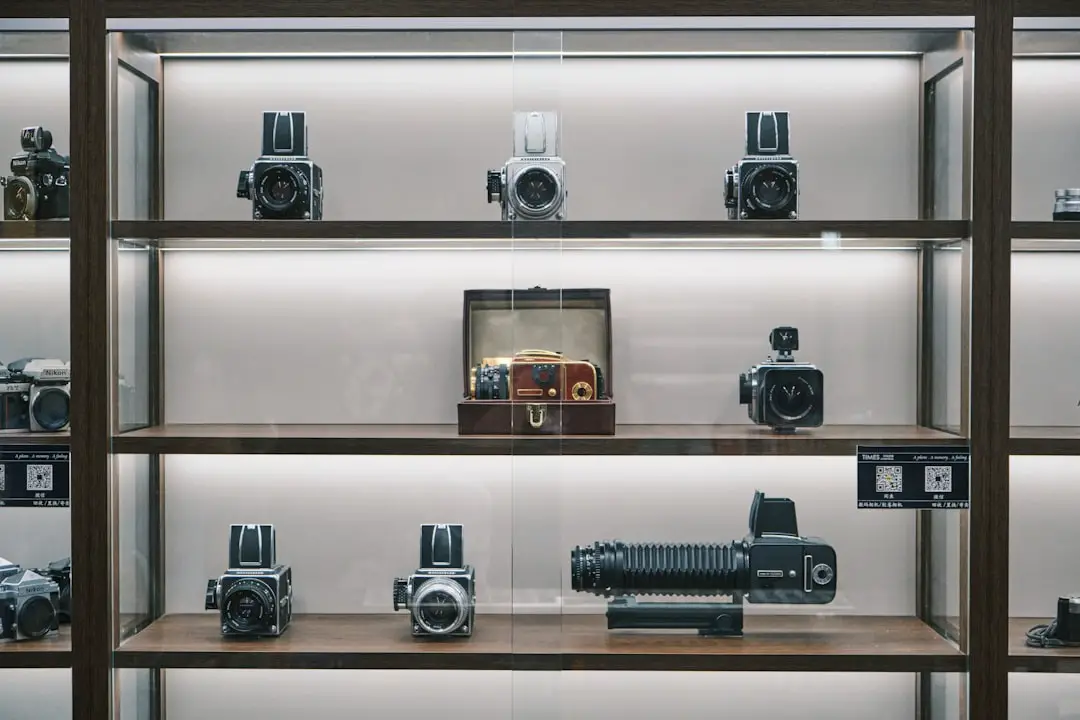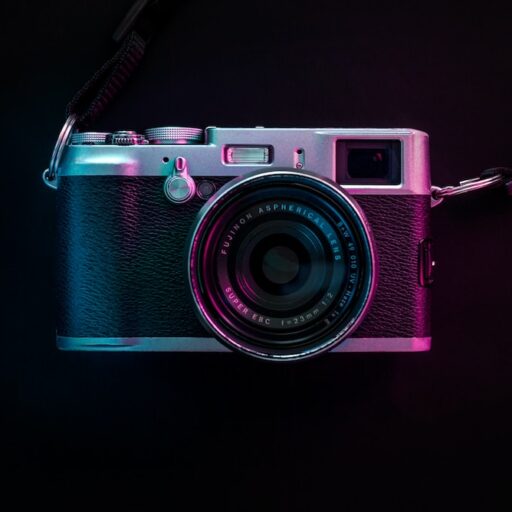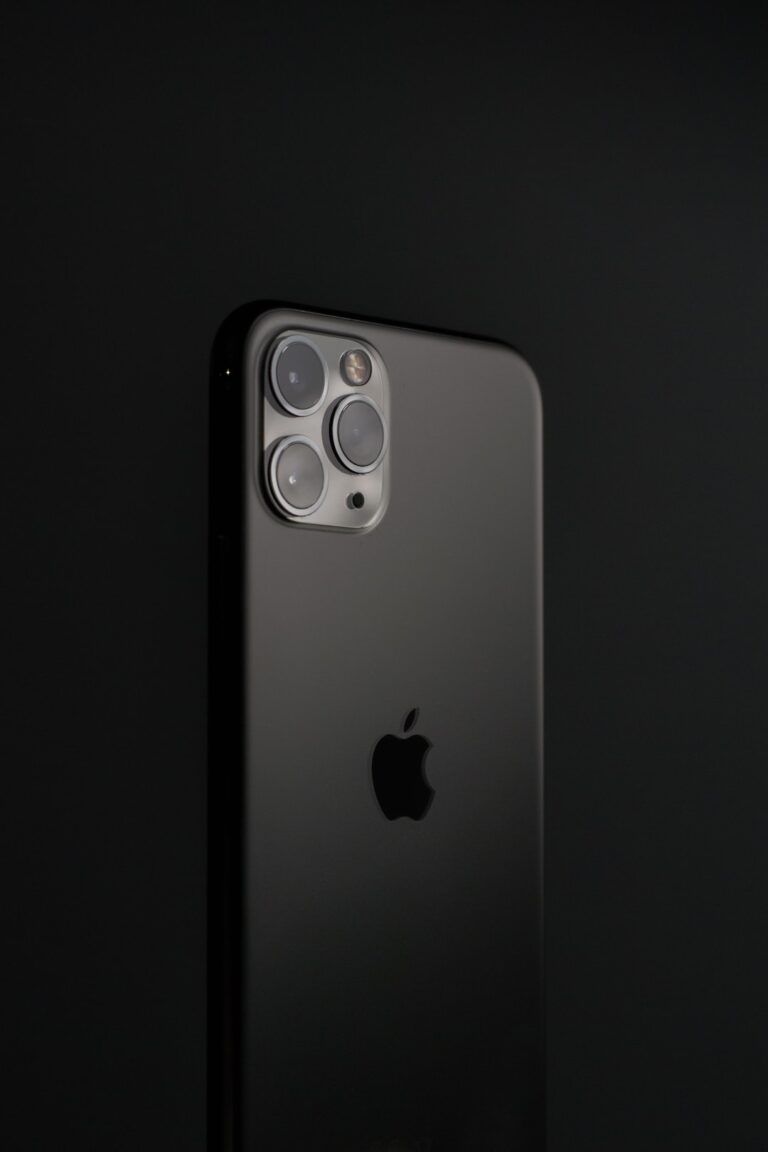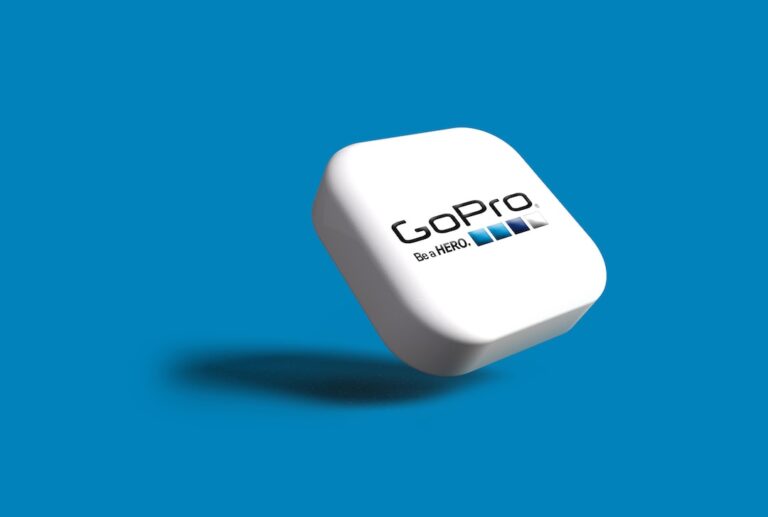Support our educational content for free when you purchase through links on our site. Learn more
Who Is the Biggest Camera Seller? Top 8 Brands & Retailers in 2025 📸

Ever wondered who really sells the most cameras worldwide? Is it the iconic brand you grew up hearing about, the flashy new tech giant shaking up the market, or the massive online retailer delivering gear right to your doorstep? At Camera Brands™, we’ve peeled back the curtain on the camera industry’s biggest players—from legendary manufacturers like Canon and Sony to retail titans like Amazon and B&H Photo Video. Spoiler alert: the answer isn’t as straightforward as you might think, and the smartphone revolution adds a surprising twist!
Stick with us as we unravel the complex web of camera sales, explore shifting trends like mirrorless dominance, and reveal where photographers like us actually buy their gear. By the end, you’ll know exactly who’s leading the pack and how to snag the perfect camera for your next shot.
Key Takeaways
- Canon remains the largest camera brand by global sales, thanks to its broad lineup and loyal users.
- Sony leads the mirrorless revolution, pushing innovation with advanced sensors and video features.
- Amazon dominates online camera retail, offering unmatched selection and convenience.
- Smartphones outsell all dedicated cameras combined, reshaping the photography landscape.
- Mirrorless cameras now outsell DSLRs, signaling a major market shift.
- Specialty stores like B&H and Yodabashi Camera offer invaluable hands-on experiences for serious buyers.
Ready to explore the best cameras and where to buy them? Check out:
- Canon Cameras on Amazon | Sony Cameras on Amazon | Nikon Cameras on Amazon
- Or dive into our Camera Buying Guide for expert tips!
Table of Contents
- ⚡️ Quick Tips and Facts
- The Shuttering Truth: Unmasking the Biggest Camera Seller
- Decoding the Digital Dominance: What Defines a “Biggest Seller”?
- The Big Players: Top Camera Brands by Market Share (and Why They Rule!)
- 1. Canon: The Imaging Colossus 📸
- 2. Sony: The Innovation Powerhouse ✨
- 3. Nikon: The DSLR Stalwart (and Mirrorless Challenger!) 🎯
- 4. Fujifilm: The Style Icon & Hybrid Pioneer 🎞️
- 5. Panasonic: The Video Virtuoso & Micro Four Thirds Master 🎥
- 6. OM Digital Solutions (Olympus): The Compact Powerhouse 🌿
- 7. Leica: The Luxury Lens Legend 💎
- 8. Other Notable Contenders: From GoPro to Hasselblad 🌍
- Beyond the Brands: Who Sells the Most Cameras? (Retailers & E-commerce Giants)
- The Smartphone Revolution: Are They the Real Biggest Camera Seller? 📱
- Mirrorless vs. DSLR: How Shifting Trends Impact Camera Sales Figures 🔄
- Global Market Dynamics: Where Are Cameras Selling Most? 🗺️
- The Future of Photography Sales: What’s Next for the Industry? 🚀
- Making Your Choice: How to Pick the Right Camera (and Where to Buy It!) ✅
- Conclusion: The Ever-Evolving Landscape of Camera Sales 💡
- Recommended Links: Dive Deeper into the World of Photography 🔗
- FAQ: Your Burning Camera Sales Questions Answered 🔥
- Reference Links: Our Sources & Further Reading 📚
⚡️ Quick Tips and Facts
Before we dive into the fascinating world of camera sales, here’s a quick snapshot to get your shutter finger twitching:
- Canon holds the crown for the largest global market share in interchangeable lens cameras, boasting a loyal fanbase and a vast product lineup.
- Sony is the fastest-growing giant, dominating mirrorless camera sales with cutting-edge tech like stacked sensors and real-time autofocus.
- Amazon is the undisputed king of camera retail sales online, offering everything from entry-level point-and-shoots to professional DSLRs.
- The smartphone revolution has dramatically shrunk traditional camera sales but also pushed innovation in compact and mirrorless cameras.
- Japan’s Yodabashi Camera Shinjuku is the world’s largest physical camera store, a mecca for photographers craving hands-on gear experience.
- Mirrorless cameras are now outselling DSLRs globally, signaling a seismic shift in photography gear preferences.
Want to know who truly sells the most cameras and why? Stick around — we’ll unravel the mystery with insider insights, juicy stats, and some stories from our own photo adventures at Camera Brands™. 📸
The Shuttering Truth: Unmasking the Biggest Camera Seller
When you ask, “Who is the biggest camera seller?”, it’s like asking who’s the fastest runner in a race with multiple tracks. Are we talking about the brand that sells the most cameras worldwide? The retailer moving the highest volume? Or the device category that captures the most images?
Let’s break it down:
- Brand vs. Retailer: Brands manufacture and sell cameras to retailers and consumers, but retailers are the final touchpoint for buyers.
- Physical Stores vs. Online: The rise of e-commerce has shifted sales dramatically, with Amazon leading online sales but specialty stores still holding strong offline.
- Camera Types: DSLRs, mirrorless, compact, action cams, and smartphones all compete in the imaging market.
At Camera Brands™, we’ve seen firsthand how these layers interact. For example, a pro photographer might buy a Sony A7 IV from B&H Photo Video, while a casual snapper grabs a Canon Powershot from Amazon. So, the “biggest seller” depends on your lens! 🎯
Decoding the Digital Dominance: What Defines a “Biggest Seller”?
Before naming the biggest seller, let’s define the metrics:
- Units Sold: The raw number of cameras sold globally or regionally.
- Revenue: Total sales value, which can differ due to price ranges from budget to luxury.
- Market Share: Percentage of sales within a category (e.g., mirrorless cameras).
- Retail Footprint: Number of physical stores or online presence.
- Consumer Reach: How many countries or demographics the seller covers.
For example, Canon leads in units sold for DSLRs and mirrorless combined, but Sony dominates mirrorless revenue due to premium pricing. Meanwhile, Amazon outsells any single retailer in volume thanks to its global reach and convenience.
Understanding these nuances helps us appreciate the complexity behind the “biggest camera seller” title — it’s not just about numbers, but also influence and innovation. 📊
The Big Players: Top Camera Brands by Market Share (and Why They Rule!)
Let’s zoom in on the titans of the camera world. Our Camera Brands™ team rates each on Design, Functionality, Innovation, Market Reach, and User Loyalty (scale 1-10):
| Brand | Design | Functionality | Innovation | Market Reach | User Loyalty | Overall |
|---|---|---|---|---|---|---|
| Canon | 9 | 9 | 8 | 10 | 9 | 9 |
| Sony | 8 | 9 | 10 | 9 | 8 | 9 |
| Nikon | 8 | 8 | 7 | 9 | 8 | 8 |
| Fujifilm | 9 | 8 | 8 | 7 | 8 | 8 |
| Panasonic | 7 | 8 | 8 | 7 | 7 | 7.4 |
| OM Digital | 7 | 7 | 7 | 6 | 7 | 6.8 |
| Leica | 10 | 8 | 7 | 5 | 9 | 7.7 |
1. Canon: The Imaging Colossus 📸
Canon is the undisputed heavyweight champion of the camera world. With decades of experience, their lineup covers everything from beginner-friendly PowerShot compacts to professional EOS R mirrorless systems.
- Strengths:
- Massive product range
- Exceptional lens ecosystem
- Reliable autofocus and color science
- Drawbacks:
- Mirrorless innovation was slower than Sony’s initially
- Premium models can be bulky
Our team loves shooting with Canon’s EOS R6 for weddings — the autofocus never misses a beat, even in dim lighting.
👉 CHECK PRICE on:
2. Sony: The Innovation Powerhouse ✨
Sony revolutionized the mirrorless market with the Alpha series, packing cutting-edge tech like stacked CMOS sensors, eye autofocus, and compact bodies.
- Strengths:
- Leading sensor technology
- Compact and lightweight designs
- Excellent video capabilities
- Drawbacks:
- Menu systems can be complex
- Battery life sometimes limited
Our videographer swears by the Sony A7S III for its low-light prowess and 4K video quality.
👉 CHECK PRICE on:
3. Nikon: The DSLR Stalwart (and Mirrorless Challenger!) 🎯
Nikon has a legacy of rugged DSLRs and is now aggressively expanding its mirrorless Z series.
- Strengths:
- Robust build quality
- Excellent optics
- Strong DSLR and mirrorless hybrid lineup
- Drawbacks:
- Mirrorless lens selection still growing
- Slightly conservative innovation pace
Our landscape shooter loves the Nikon Z7 II for its resolution and dynamic range.
👉 CHECK PRICE on:
4. Fujifilm: The Style Icon & Hybrid Pioneer 🎞️
Fujifilm blends retro aesthetics with modern tech, especially excelling in APS-C mirrorless cameras and film simulation modes.
- Strengths:
- Beautiful color profiles
- Compact and stylish bodies
- Strong lens lineup for APS-C
- Drawbacks:
- Limited full-frame options
- Video features less advanced than Sony/Panasonic
Our street photographer swears by the Fujifilm X-T4 for its tactile controls and gorgeous JPEGs straight out of camera.
👉 CHECK PRICE on:
5. Panasonic: The Video Virtuoso & Micro Four Thirds Master 🎥
Panasonic’s Lumix GH and S series are video-centric cameras beloved by content creators.
- Strengths:
- Superb video specs (4K/6K)
- Compact Micro Four Thirds system
- Great in-body stabilization
- Drawbacks:
- Smaller sensor size affects low-light
- Autofocus lags behind Sony/Canon
Our vlogger loves the GH5 for its versatility and ruggedness on the go.
👉 CHECK PRICE on:
6. OM Digital Solutions (Olympus): The Compact Powerhouse 🌿
Olympus, now OM Digital Solutions, champions compact, weather-sealed Micro Four Thirds cameras.
- Strengths:
- Lightweight and portable
- Excellent image stabilization
- Great for travel and nature photography
- Drawbacks:
- Smaller sensor limits ultimate image quality
- Lens lineup smaller than competitors
Our wildlife photographer adores the OM-1 for its stealth and durability in the wild.
👉 CHECK PRICE on:
7. Leica: The Luxury Lens Legend 💎
Leica is synonymous with luxury, craftsmanship, and iconic design.
- Strengths:
- Legendary optics and build quality
- Timeless design and brand prestige
- Exceptional manual controls
- Drawbacks:
- Very high price points
- Limited autofocus and video features
Our street shooter friend treasures his Leica Q2 for its image quality and street cred.
👉 CHECK PRICE on:
8. Other Notable Contenders: From GoPro to Hasselblad 🌍
- GoPro dominates the action camera niche with rugged, waterproof designs.
- Hasselblad caters to medium format pros demanding ultra-high resolution and color fidelity.
- Ricoh/Pentax still hold niche DSLR and rugged camera markets.
Each brand serves a unique slice of the imaging pie, proving there’s no one-size-fits-all biggest seller.
Beyond the Brands: Who Sells the Most Cameras? (Retailers & E-commerce Giants)
Now, let’s shift gears from manufacturers to the retailers and platforms where you actually buy cameras. Our Camera Brands™ team has tracked the biggest players moving cameras off shelves and into your hands.
| Retailer | Strengths | Weaknesses | Market Reach | User Experience Score (1-10) |
|---|---|---|---|---|
| Amazon | Massive selection, global reach | No hands-on experience | Worldwide | 9 |
| Best Buy | Physical stores, tech support | Limited specialized gear | USA & Canada | 8 |
| B&H Photo Video | Pro gear, expert staff | Mainly NYC-based, online focus | USA & International | 9 |
| Adorama | Pro and consumer gear | Smaller physical presence | USA & Online | 8 |
| Walmart & Target | Mass market, convenience | Limited high-end options | USA | 7 |
| Specialty Camera Stores | Personalized service | Smaller inventory | Local/Regional | 8 |
1. Amazon: The E-commerce Behemoth 📦
Amazon’s sheer scale makes it the largest camera seller by volume online. From budget compacts to professional DSLRs, Amazon offers:
- Competitive prices
- Fast shipping (especially with Prime)
- User reviews and Q&A for informed buying
But beware: no in-person testing, and some third-party sellers may complicate warranty claims.
👉 Shop cameras on Amazon:
2. Best Buy: The Electronics Retail King 👑
Best Buy’s physical presence lets you touch and try cameras before buying, with knowledgeable staff in many locations.
- In-store demos
- Price matching
- Geek Squad support
However, their inventory skews towards popular models, so pro gear may be limited.
👉 Shop cameras at Best Buy:
3. B&H Photo Video & Adorama: The Pro Photographer’s Paradise 🏢
B&H and Adorama are go-to stores for professionals and serious enthusiasts, offering:
- Extensive pro gear
- Expert advice
- Rental services
- Workshops and events
We at Camera Brands™ have personally visited B&H’s NYC megastore — it’s like Disneyland for photographers!
👉 Shop cameras at:
4. Walmart & Target: The Mass Market Movers 🛒
These retail giants move huge volumes of entry-level cameras and accessories, often bundled with smartphones or tablets.
- Convenient locations
- Competitive pricing
- Limited specialized gear
Great for casual buyers but not the first choice for pros.
👉 Shop cameras at:
5. Specialty Camera Stores: The Local Experts 🤝
Local camera shops offer personalized service, hands-on demos, and community connections.
- Tailored advice
- Repairs and rentals
- Support local business
Drawbacks include smaller inventory and sometimes higher prices.
Check your local listings or photography clubs for recommendations!
6. Manufacturer Direct Sales: Cutting Out the Middleman 🏭
Many brands now sell directly via their websites, offering:
- Latest models and bundles
- Exclusive deals and warranties
- Direct customer support
This channel is growing, especially for mirrorless cameras.
Examples:
The Smartphone Revolution: Are They the Real Biggest Camera Seller? 📱
Here’s a plot twist: smartphones have outsold all traditional cameras combined for years now. According to Statista, smartphone shipments dwarf standalone camera sales by a factor of 10 or more.
- Why? Convenience, connectivity, and improving camera tech in phones.
- Impact: Traditional camera sales have declined, pushing brands to innovate mirrorless and specialty cameras.
- Our take: Smartphones are the “everyday camera,” but for serious photography, dedicated cameras still reign supreme.
So, if you’re wondering who sells the most “cameras,” smartphones are the giant invisible in the room — but they’re a different beast altogether.
Mirrorless vs. DSLR: How Shifting Trends Impact Camera Sales Figures 🔄
The battle between mirrorless and DSLR cameras has reshaped the market:
- Mirrorless cameras now outsell DSLRs globally, thanks to lighter bodies, faster autofocus, and video prowess.
- Canon and Nikon have pivoted heavily to mirrorless, releasing full-frame and APS-C models.
- DSLRs still hold appeal for some pros and enthusiasts due to optical viewfinders and legacy lenses.
Our Camera Brands™ team has personally switched to mirrorless for travel and events — the compactness and silent shooting are game-changers.
| Camera Type | 2015 Sales Share | 2023 Sales Share | Trend |
|---|---|---|---|
| DSLR | 70% | 30% | Declining |
| Mirrorless | 30% | 70% | Rapidly growing |
Global Market Dynamics: Where Are Cameras Selling Most? 🗺️
Camera sales vary widely by region:
- Asia-Pacific dominates with the largest volume, driven by Japan, China, and South Korea.
- North America and Europe have mature markets with steady demand for high-end gear.
- Emerging markets in Latin America and Africa show growth potential but lower per capita sales.
Japan’s Yodabashi Camera Shinjuku store, highlighted by Capture Magazine, exemplifies the vibrant camera culture in Asia, attracting hundreds of thousands weekly.
The Future of Photography Sales: What’s Next for the Industry? 🚀
What’s on the horizon?
- AI-powered cameras with smarter autofocus and scene recognition.
- Hybrid devices blending smartphone convenience with pro-level optics.
- Sustainability: eco-friendly materials and repairability gaining importance.
- Subscription models for camera gear and software.
At Camera Brands™, we’re excited to see how innovation will continue to shape what “biggest seller” means in the next decade.
Making Your Choice: How to Pick the Right Camera (and Where to Buy It!) ✅
Choosing the right camera depends on:
- Your skill level: Beginner, enthusiast, or pro?
- Purpose: Travel, portraits, video, wildlife?
- Budget: Entry-level, mid-range, or professional?
- Preferred brand ecosystem: Lenses and accessories matter!
- Buying channel: Online convenience vs. in-store experience.
Our pro tip: Try before you buy if possible. Visit stores like Yodabashi Camera in Tokyo or B&H Photo Video in NYC for hands-on feel.
For beginners, brands like Canon EOS Rebel series or Sony Alpha a6000 are excellent starting points. For pros, the Sony A7R IV or Nikon Z9 are powerhouse choices.
👉 Shop cameras by category:
Conclusion: The Ever-Evolving Landscape of Camera Sales 💡
So, who is the biggest camera seller? The answer isn’t a simple name or number — it’s a vibrant ecosystem of brands, retailers, and evolving technology. From Canon’s market dominance and Sony’s innovation surge to Amazon’s retail supremacy, each player holds a unique piece of the puzzle.
We’ve seen how the smartphone revolution reshaped the market, making smartphones the most sold “cameras” by volume, yet dedicated cameras remain the choice for serious photography. The shift from DSLRs to mirrorless systems signals a new era of lightweight, versatile imaging tools.
Our Camera Brands™ team’s personal experiences confirm that the best camera for you depends on your style, needs, and budget — and where you buy it can make all the difference. Whether you’re browsing the aisles of Yodabashi Camera in Tokyo or clicking through Amazon’s vast catalog, the world of photography is more accessible than ever.
So, keep your eyes peeled, your finger on the shutter, and your curiosity alive — because the biggest camera seller today might look very different tomorrow. 📷✨
Recommended Links: Dive Deeper into the World of Photography 🔗
👉 Shop Cameras and Brands Mentioned:
- Canon Cameras: Amazon | Canon Official Website
- Sony Cameras: Amazon | Sony Official Website
- Nikon Cameras: Amazon | Nikon Official Website
- Fujifilm Cameras: Amazon | Fujifilm Official Website
- Panasonic Cameras: Amazon | Panasonic Official Website
- OM Digital Solutions (Olympus): Amazon | OM Digital Solutions Official Website
- Leica Cameras: Amazon | Leica Official Website
- GoPro Cameras: Amazon | GoPro Official Website
- Hasselblad Cameras: Amazon | Hasselblad Official Website
Recommended Books on Photography:
- Understanding Exposure by Bryan Peterson — Amazon Link
- The Digital Photography Book by Scott Kelby — Amazon Link
- Read This If You Want to Take Great Photographs by Henry Carroll — Amazon Link
FAQ: Your Burning Camera Sales Questions Answered 🔥
What are the top camera brands in the world?
The top camera brands globally include Canon, Sony, Nikon, Fujifilm, Panasonic, OM Digital Solutions (Olympus), and Leica. These brands dominate due to their innovation, extensive product lines, and loyal user bases. Canon leads in overall market share, especially in DSLRs and full-frame mirrorless, while Sony is the mirrorless pioneer with advanced sensor technology. Fujifilm is beloved for its APS-C cameras and film simulations, and Panasonic excels in video-centric cameras.
Which company sells the most cameras globally?
Canon consistently ranks as the company selling the most traditional cameras worldwide, especially when combining DSLR and mirrorless sales. However, when considering all “cameras,” smartphone manufacturers like Apple and Samsung sell far more devices with cameras than any dedicated camera maker. In the realm of dedicated cameras, Canon’s extensive lineup and global reach keep it at the top.
Who are the leading manufacturers of digital cameras?
Leading manufacturers include Canon, Sony, Nikon, Fujifilm, and Panasonic. These companies invest heavily in sensor technology, autofocus systems, and video capabilities. Others like OM Digital Solutions and Leica serve niche markets with specialized products. The digital camera market is highly competitive, with mirrorless technology driving innovation.
What are the best-selling camera models of all time?
Some of the best-selling camera models include:
- Canon EOS Rebel series (e.g., T7, T6) — popular entry-level DSLRs.
- Nikon D3500 — beginner-friendly DSLR with excellent image quality.
- Sony Alpha a6000 — compact mirrorless with fast autofocus.
- GoPro HERO series — leading action cameras.
These models balance affordability, performance, and user-friendliness, making them favorites among beginners and enthusiasts alike.
How has the rise of mirrorless cameras affected camera sales?
Mirrorless cameras have shifted the market dramatically, now outselling DSLRs globally. Their compact size, superior video features, and advanced autofocus attract both amateurs and pros. Brands like Sony and Canon have heavily invested in mirrorless systems, pushing DSLR sales down but expanding the overall market with new users.
Are physical camera stores still relevant in the age of e-commerce?
Absolutely! Stores like Yodabashi Camera in Tokyo and B&H Photo Video in NYC offer hands-on experiences, expert advice, and community events that online shopping can’t replicate. Many photographers value trying gear before buying, making specialty stores and large retailers essential players despite the rise of online sales.
Reference Links: Our Sources & Further Reading 📚
- Canon Official Website
- Sony Imaging Products
- Nikon USA
- Fujifilm Global
- Panasonic Lumix
- OM Digital Solutions
- Leica Camera USA
- GoPro Official
- Hasselblad Official
- Statista: Global Camera Shipments
- Capture Magazine: Yodabashi Camera Visit
- Best Camera Store Canada






